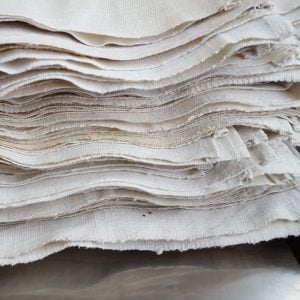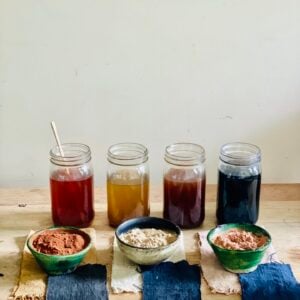Handwoven Hemp-Cotton Towel Irregulars
Sold individually. Towel sizes range from 14 to 18 inches wide and 20-24 inches (35.5 to 56 cm wide and 46 to 61 cm) long. We aren’t able to choose specific sizes or include or avoid certain types of marks. We’ve received a shipment of vintage handwoven hemp-cotton towel irregulars that have minor stains, shadings and marks. The fabric is unused but acquired blemishes due to its age. Nearly all the irregulars are stains and discolorations. The fabric is perfect for overdyeing, stitching, eco printing, bundle dyeing and surface design. Please refer to the images in the product gallery to … Read more






